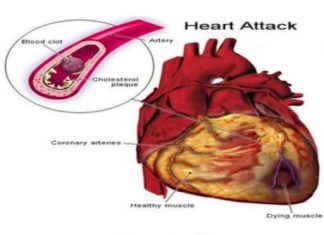Ramen noodles have long been a staple for individuals seeking quick, affordable meals. Their convenience and savory flavor make them particularly popular among college students and busy professionals. However, beneath their appealing exterior lies a potential health concern that many consumers may not be aware of: the presence of tertiary butylhydroquinone (TBHQ), a preservative used to extend shelf life. Understanding the implications of consuming TBHQ is crucial for making informed dietary choices.
What is Tertiary Butylhydroquinone (TBHQ)?
TBHQ is a synthetic antioxidant employed by food manufacturers to prevent oxidation and prolong the shelf life of processed foods. It is commonly found in products containing fats and oils, such as snack foods, frozen meals, and instant noodles like ramen. By inhibiting the rancidity of oils, TBHQ helps maintain the flavor and appearance of these products over time.

While regulatory agencies like the U.S. Food and Drug Administration (FDA) have deemed TBHQ safe for consumption in small quantities, concerns arise when individuals consume multiple processed foods containing this additive, leading to a cumulative intake that may exceed recommended limits.
Health Risks Associated with TBHQ
Research into the health effects of TBHQ has yielded findings that warrant attention:
- Carcinogenic Potential: High doses of TBHQ have been linked to the development of precancerous stomach tumors and DNA damage in laboratory animals. Although these studies do not conclusively prove the same effects in humans, they raise concerns about the long-term consumption of TBHQ.
- Neurological and Behavioral Effects: Some studies suggest that TBHQ may influence neurological health, potentially leading to behavioral changes. This has led certain dietary programs, such as the Feingold Diet—designed to manage attention deficit hyperactivity disorder (ADHD)—to recommend avoiding TBHQ.
- Immune System Impact: Emerging research indicates that TBHQ might adversely affect the immune system, potentially altering immune responses and reducing the body’s ability to fend off illnesses.
- Exacerbation of Allergies: For individuals with existing food allergies, TBHQ may intensify allergic reactions, posing additional health risks.
Recognizing Symptoms of Excessive TBHQ Consumption
While occasional consumption of foods containing TBHQ is unlikely to cause immediate harm, excessive intake may lead to symptoms such as:
- Nausea
- Vomiting
- Ringing in the ears (tinnitus)
- Delirium
- A sense of suffocation

If any of these symptoms are experienced and are suspected to be linked to TBHQ consumption, it is advisable to consult a healthcare professional.
Making Informed Dietary Choices
To minimize potential health risks associated with TBHQ:
- Read Ingredient Labels: Familiarize yourself with food labels to identify and limit the intake of products containing TBHQ.
- Limit Processed Foods: Reduce the consumption of processed and packaged foods, which are more likely to contain synthetic additives.
- Embrace Whole Foods: Incorporate more whole, unprocessed foods into your diet, such as fruits, vegetables, whole grains, and lean proteins, which offer essential nutrients without added preservatives.
- Cook at Home: Preparing meals at home allows for greater control over ingredients and reduces reliance on processed foods.
Conclusion
While ramen noodles and similar processed foods offer convenience, it is important to be aware of additives like TBHQ and their potential health implications. By making conscious dietary choices and prioritizing whole, unprocessed foods, individuals can enjoy a balanced diet that supports long-term health and well-being.

















